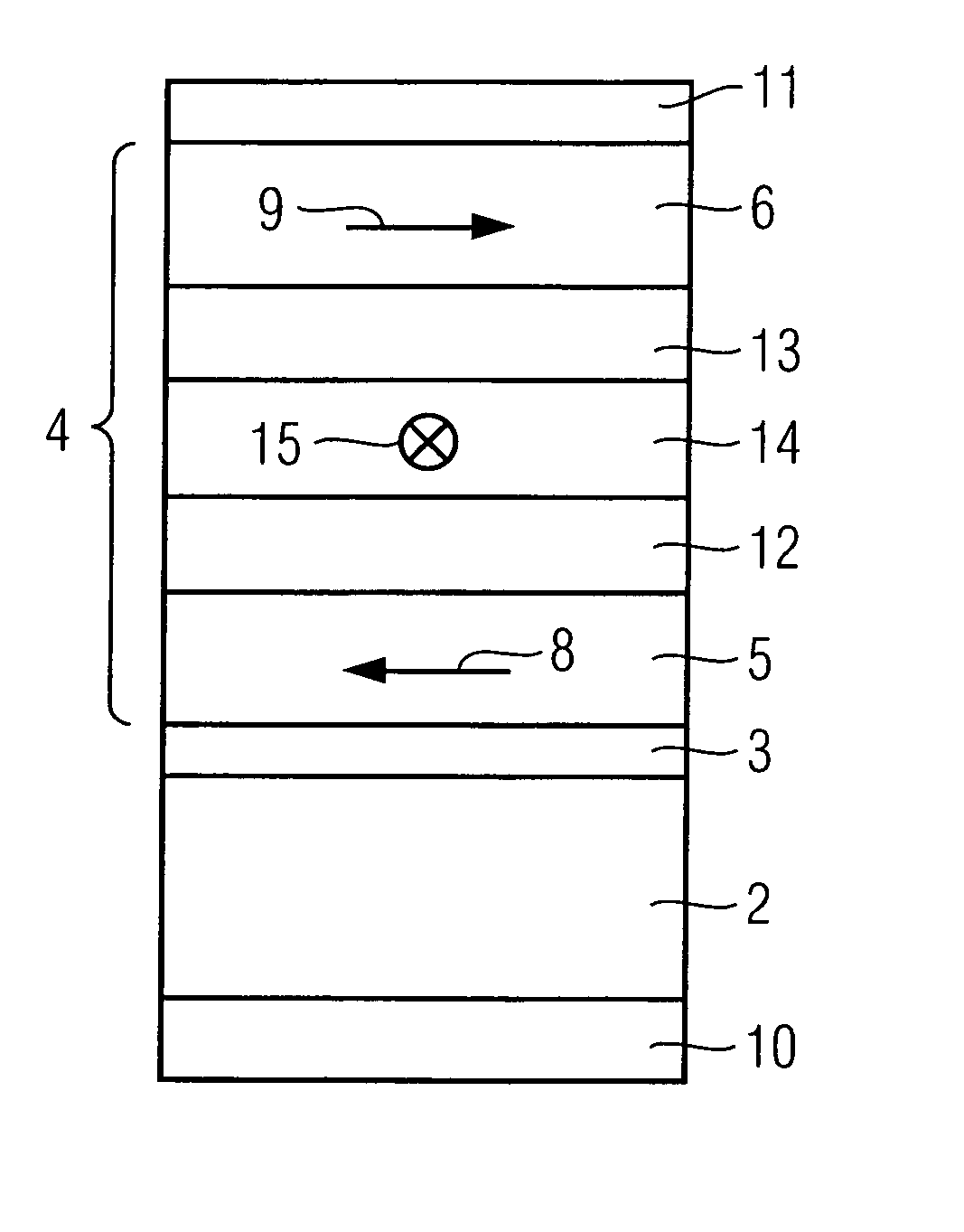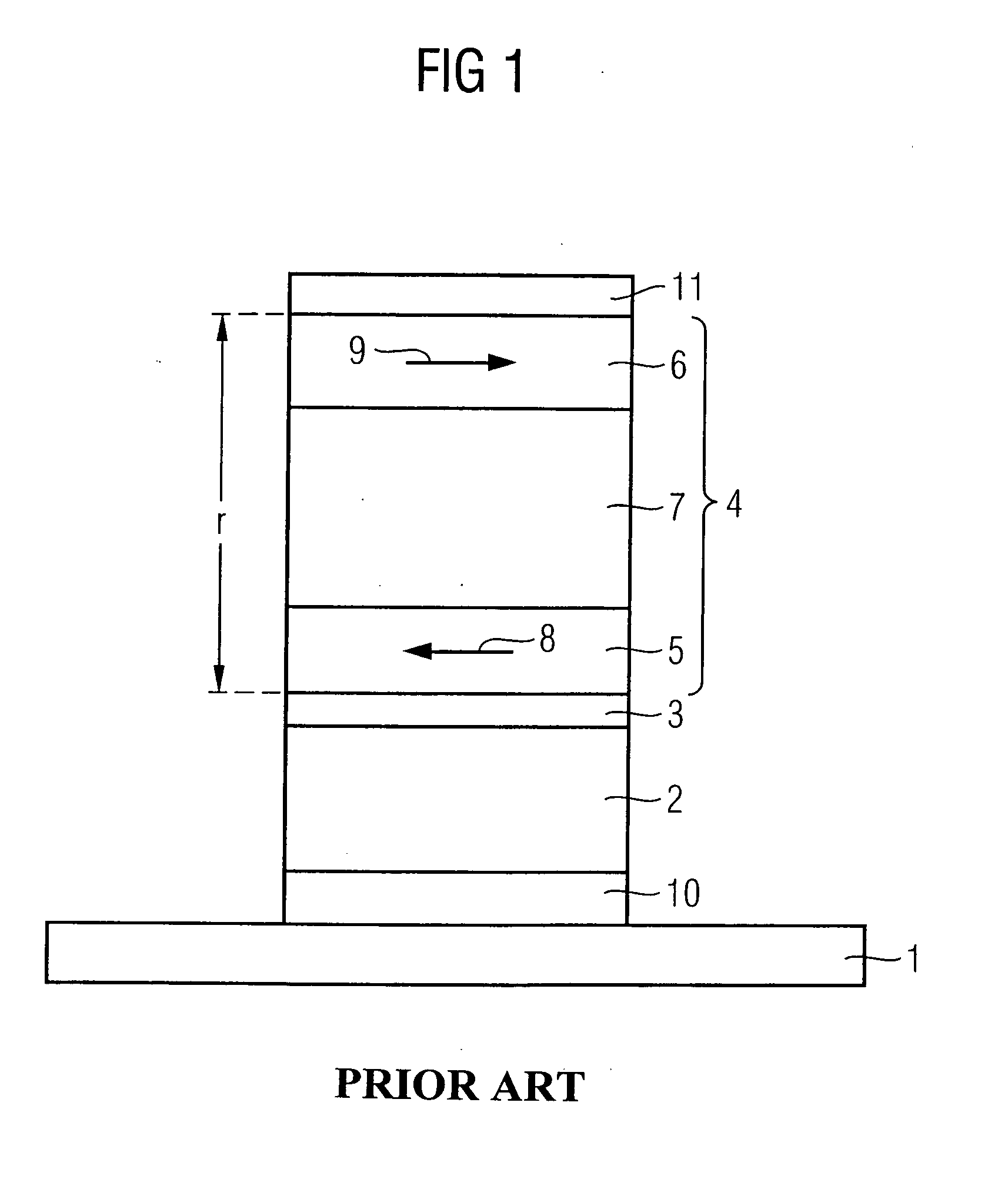Adiabatic rotational switching memory element including a ferromagnetic decoupling layer
a technology of ferromagnetic decoupling layer and memory element, which is applied in the direction of magnetic-field-controlled resistors, magnetic bodies, semiconductor devices, etc., can solve the problems of large memory performance, dramatic increase of antiferromagnetic coupling forces, and detrimental to down-scaling of memory cells, etc., and achieve the effect of increasing coupling energy
- Summary
- Abstract
- Description
- Claims
- Application Information
AI Technical Summary
Benefits of technology
Problems solved by technology
Method used
Image
Examples
Embodiment Construction
[0023] An exemplary embodiment of a memory element in accordance with the invention is depicted in FIG. 2. A patterned layered stack includes a tunneling barrier 3 including at least one tunneling barrier layer made of a non-magnetic material, a ferromagnetic reference region 2 and a ferromagnetic free region 4. The ferromagnetic reference region 2 includes a fixed magnetization arranged on one side and adjacent the tunneling barrier 3. The ferromagnetic free region 4 includes a free magnetization arranged on an opposite side and adjacent the tunneling barrier 3 and is free to be switched between oppositely aligned directions along a magnetic easy axis thereof, which typically is chosen to be in parallel alignment as to the fixed magnetization. The tunneling barrier 3 and the ferromagnetic reference and free regions 2, 4 together form a magnetoresistive tunneling junction. The ferromagnetic free region 4 includes two ferromagnetic free layers 5, 6 which are magnetically coupled. Opt...
PUM
 Login to View More
Login to View More Abstract
Description
Claims
Application Information
 Login to View More
Login to View More - R&D
- Intellectual Property
- Life Sciences
- Materials
- Tech Scout
- Unparalleled Data Quality
- Higher Quality Content
- 60% Fewer Hallucinations
Browse by: Latest US Patents, China's latest patents, Technical Efficacy Thesaurus, Application Domain, Technology Topic, Popular Technical Reports.
© 2025 PatSnap. All rights reserved.Legal|Privacy policy|Modern Slavery Act Transparency Statement|Sitemap|About US| Contact US: help@patsnap.com



